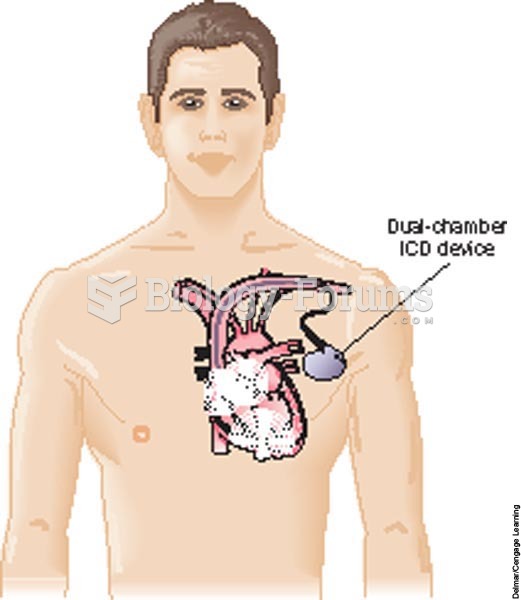|
|
|
Cyanide works by making the human body unable to use oxygen.
There are major differences in the metabolism of morphine and the illegal drug heroin. Morphine mostly produces its CNS effects through m-receptors, and at k- and d-receptors. Heroin has a slight affinity for opiate receptors. Most of its actions are due to metabolism to active metabolites (6-acetylmorphine, morphine, and morphine-6-glucuronide).
As many as 28% of hospitalized patients requiring mechanical ventilators to help them breathe (for more than 48 hours) will develop ventilator-associated pneumonia. Current therapy involves intravenous antibiotics, but new antibiotics that can be inhaled (and more directly treat the infection) are being developed.
Everyone has one nostril that is larger than the other.
You should not take more than 1,000 mg of vitamin E per day. Doses above this amount increase the risk of bleeding problems that can lead to a stroke.
 An implantable cardiovert-defibrillator: A dual-chamber ICD device with a pulse generator is implant
An implantable cardiovert-defibrillator: A dual-chamber ICD device with a pulse generator is implant
 Parents who grew up in dual-earner families are more apt to share household tasks equally than those ...
Parents who grew up in dual-earner families are more apt to share household tasks equally than those ...
 Targeting female fetuses for abortion has become a main issue of the emerging feminist movement in ...
Targeting female fetuses for abortion has become a main issue of the emerging feminist movement in ...




